Welcome to the second installment in a four-part “Beyond the Track” series by Coaster101 guest writer Ryan Cataldo.
There is more beyond the surface of a roller coaster than just hills and drops. Every functional coaster on earth has scrutinous engineering and special principles behind it. Not all coasters are built equally, though. A handful of manufacturers from across the globe are responsible for fabricating these steel machines. Each manufacturer has its own unique style of track, support structure and train design. Moreover, each company follows different layout guidelines and principles. The specialties of three vastly different roller coaster manufacturers are compared throughout this series, including their history, highlights and pitfalls.
In this installment, we discuss The Smiler, an infamous 14-looping coaster at Alton Towers, is explored to exemplify Gerstlauer’s engineering.
Beyond the Track: Smiler at Alton Towers
The Smiler – Manufacturer Overview
The Smiler is an infinity coaster designed by German manufacturer Gerstlauer. The company was founded in 1981 by Hubert Gerstlauer, who used to work for now-defunct German manufacturer Schwarzkopf. Gerstlauer built its first coaster in 1998, which was a bobsled coaster called G’sengte Sau, at Erlebnispark Tripsdrill in Cleebronn, Germany. Gertslauer has built over 90 coasters across the world, all of which are still operating today. Gerstlauer has been involved with building wooden coasters and flat rides, but it is most well known for its Euro-Fighter and Infinity coaster models, which pack a lot of track and elements into a small plot of land. It built its first Euro-fighter model in 2003, called Vild-Svinet at BonBon-Land in Denmark. In addition to the previously mentioned models, Gerstlauer also manufactures wild mouse coasters, spinning coasters and launched coasters. It even used to manufacture trains for earlier RMC coasters, back when RMC was not able to make its own trains.
Important Dates and History of The Smiler
In 2011, Alton towers and Gerstlauer filed permits with local authorities to build a headliner attraction. In 2012, the permits were accepted, and Alton Towers was clear to begin construction. The name “The Smiler” was trademarked that year. This was Gerstlauer’s first Infinity Coaster, and 11 more of this same model would come after it. The ride, after being rumored and speculated about for most of 2012, was officially announced by Alton Towers in January of 2013.
The final track piece was laid in April of that year, and theming elements were also added. On May 31, 2013, The Smiler opened to the public, breaking the record for most inversions on a roller coaster with 14, as well as the record for the most densely-packed coaster on earth.
John Wardley, who designed the ride’s layout, said in an interview that the engineers “packed more track per meter of space in this ride than any other rollercoaster in the world…it plays around with your mind…it’s more than just a physical rollercoaster” (“Smiler To Be ‘Most Densley [sic] Packed’ Rollercoaster”). Later in the ride’s life, a major crash caused by human error occurred on June 2, 2015. The ride was closed for 9 months until it reopened in March of 2016. The ride has been operating incident-free ever since..
The Smiler’s Track Design
The Smiler’s track formulation follows the same design utilized in most other Gerstlauer coasters. Two rails are connected by a cross-hatching of steel bars, and a spine is attached to those rails by two more sets of cross-hatchings of steel bars. This creates a triangular track design throughout. Some Gerstlauer coasters will use track that forms into a dual-spined box at higher-stress areas of the coaster. The Smiler, however, does not go very fast, but rather feels faster to riders as a result of the tight elements on the ride. Hence, Gerstlauer did not need to use the dual-spined track on any parts of The Smiler.
The Smiler’s Support System
Since opening, The Smiler’s support system has been altered and improved. Earlier in the coaster’s life, cracks were found in the supports, and park guests witnessed a beam fall from the support structure. These issues have been resolved, and now the supports are sturdy. This ride’s support system consists of a large tangled mess of steel beams, which connect to the track via thick bolts called fasteners. The beams are held into the ground with footers made of reinforced concrete. The Smiler, though entirely safe and structurally sound, appears to have
minimal supports to give the track a “floating” look.
The Smiler’s Train Design
The trains for this coaster consist of four rows with four seats in each row, allowing a maximum capacity of 16 riders per train.
The front row of the train has a large metal crash guard on the front, bearing the Smiler logo. The whole train is painted black and yellow, with twisted smiling faces plastered on the back of every seat. Each seat uses over-the-shoulder restraints, which are kept locked in place by a hydraulic cylinder. This apparatus is encased in a metal yellow cage behind each seat. Since the ride uses magnetic brakes, a large metal magnetic braking fin is attached to the bottom of the train, in order to engage with the brakes along the ride.
Being small and compact, the trains are able to traverse the tight elements in the ride. Each train features four distinct but similar segments. Each segment consists of two sets of three wheels which can grip the track and roll along it smoothly. The road wheels are the largest since they bear the most weight. According to Gerstlauer, the infinity coasters’ trains have “…spring-mounted steering [which] provides high flexibility and riding comfort” (Gerstlauer Infinity Coaster Pamphlet)..
Programming The Smiler
The programming of The Smiler works to stop trains from colliding. A system of sensors will detect when a train has passed through a section of track, and notify the computer when the succeeding train is clear to advance into that same portion of the ride. If a train is about to advance into an occupied block section, the system will stop the train on the brakes. Occasionally, one of these sensors will accidentally trigger, and make the ride system think there is a train within a block section when in reality, there is not. This rare occurrence creates what is known as a “ghost train,” which may lead to a temporary shutdown of the ride.
The Smiler’s Lift System
Two chain lifts are used to pull The Smiler’s trains to the top of their hills. One of the lifts is set at a slanted angle, and the other lift is vertical, pulling riders up at a 90-degree incline. A traditional lift hill would use a system of anti-rollback-teeth attached to the track and an anti-rollback-dog fastened to the underside of the trains to prevent the occasion of the coaster rolling back down the lift at all costs. If a train is stopped like this on a traditional lift hill, riders can be assisted in evacuating from the trains and safely descending the lift hill on foot. The Smiler’s lift hills, however, use magnetic anti-rollback systems, which can stop the train from rolling back in the event of the chain giving out, but can also be released and allow the train to descend back to the foot of the lift hill (Gerstlauer Infinity Coaster Pamphlet). This will allow easier evacuation for riders.
Note: Although both lifts use magnetic anti-rollback devices, the first lift hill is set at an angle where it is still possible to have stairs running alongside it. Hence, in the event of an evacuation, the train will likely not be brought back to the bottom of the lift, but rather stopped in place. Guests would then travel down the staircase. On the second vertical lift, this is not an option, and the must be released for the train to return to the bottom of the lift in order for a safe evacuation.
The Smiler’s Design Constrictions
Local authorities forbid Alton Towers from building any coasters above the treeline, as doing so “…may have a negative impact on the character of the landscape” (Staffordshire Moorlands District Council 89). To construct a coaster with 14 inversions, engineers at Gerstlauer informed the park that a very tall lift would need to be used. Yet, to comply with the aforementioned requirements, two shorter lifts are used instead, and the ride’s inversions are broken up.
Half of the inversions coast off the momentum of the first lift hill, and half glide off of the momentum of the second. In addition to these efforts, Alton Towers decided to expand downwards, rather than building any higher. A large pit was excavated, varying in elevation from 10-20 feet below ground level. Much of the twisted track of the ride sits within it.
Incidents on The Smiler
The first year of the Smiler’s operating life was plagued with conflicts. In the week leading up to the ride’s opening, a train got stuck at the top of the first lift hill. Two times, a train empty of riders stalled in the lowest point of the batwing inversion. On July 21, 2013, guests were evacuated from the ride after witnesses noticed a beam fall from the support structure. Nine days later, the ride was closed for five days after cracks were found in the ride’s footers (Expressandstar.com). In November of that same year, a set of guide wheels fell off of the vertical lift and struck riders, injuring four. The Smiler would operate accident-free for all of 2014, but within the following year, the coaster’s worst incident would occur.
On June 2, 2015, The Smiler’s programming system detected higher winds than the coaster is able to operate safely in, and the ride was shut down. On this day, the park was extra crowded, and the maintenance team decided to add a fifth train to the track in order to increase capacity. The vehicle was added in addition to the four trains which were already on the track. The maintenance did not inform the ride operators of this action. This was later described as a “…huge breakdown in communication” (Bond and Roger). This train was sent around the course empty, and it stalled during the batwing inversion.
Meanwhile, the operators of The Smiler began to allow guests to board again. Four trains were idled in the station, and the ride operator was oblivious to the fact that a fifth had been added. He sent a train full of guests up the lift. The ride’s programming stopped the coaster at the top of the lift, knowing that the section of track ahead was occupied. This is a testament to the efficacy of the ride’s programming. The ride operator and a colleague overrode the safety warning and sent the train full of riders on the same track that contained the stalled train. The ride operator later said that he felt pressure to get the ride running again. The trains collided at 1:58 p.m. This incident could have been avoided, as it was caused entirely by miscommunication and human error. After the accident, all thematic references to correction within the attraction were removed, but the overall theme of The Smiler was not changed by the park.
The Smiler – Ride-Through Description
The station of the coaster is set in the experimental facility run by the fictional organization known as “The Ministry of Joy.” Riders take part as volunteers in the Ministry’s experiments. As the train dispatches from the station, strong operating lights glare down from overhead, and distant laughter is heard from the dark tunnel into which riders will descend. The train takes a sudden left turn into pitch-black, followed by the ride’s first inversion: a barrel roll. Exiting this element, the riders emerge from the darkness and are able to see the words “HA HA HA” on the sidewalls, as they travel outside toward the first lift hill.
After ascending the lift, the ride takes a slight dip and turns to the right, which leads the train into a rollover corkscrew drop. Riders drop down this inversion and coast into back-to-back dive loops, which resemble a figure-eight when viewed from the side. These elements interweave with the Marmaliser, a large robotic machine in the middle of the ride. Clearing the second dive loop, the coaster zips over a quick hill, flanked by the various robotic parts of the Marmaliser, such as the Tickler and the Flasher. The track maneuvers through a batwing inversion which inverts riders twice. The batwing interlocks with a cobra roll, which the train will traverse later. A corkscrew flips the train over the track that it had hauled through earlier, and allows the riders to proceed into the mid-course brakes. At this point, the train comes to a complete halt. So far, the train has completed seven of the 14 inversions on the coaster.
Note: The words “HALF WAY” are seen on both sides of the brake run. Before the accident in 2015, the signs read “HALF WAY CORRECTED.” The third word was removed during a process by the park, which eliminated all references to the correction.
A vertical lift looms above riders and a chain quickly begins pulling the train up the 90-degree hill. After cresting the hill, the train descends a short dip to the left, followed by a rollover corkscrew drop. This is essentially a mirror of the maneuver that the ride took when dropping off its first lift hill. A sea-serpent-roll follows, which is a rare pair of inversions consisting of two elevated back-to-back corkscrews. Riders pull out from the dual-inverting element and speed over a hill parallel to the one taken a minute before. This hill zooms through more of the robotic mess of the Marmaliser, coming in close contact with the Inoculators and the Hypnotisers.
The train flips through a cobra roll, which inverts twice and interlocks with the batwing from the first half of the ride. Back-to-back corkscrews follow the cobra roll, which fully rotate the riders clockwise two times in quick succession. These 13th and 14th inversions are the finale of the ride. A quick left turn swings the train into the final brake run, where the phrase “PROCESS COMPLETE” is seen on a nearby wall.
The Smiler On-Ride POV
Watch an on-ride POV video of The Smiler below:
Theming The Smiler
Generally, parks in North America do not theme their coasters to anything risky or scary; they stick to safe and inoffensive themes to please the masses. In places like Alton Towers in the UK, however, they do not play by these rules.
The Smiler is themed to a correctional facility known as “The Ministry of Joy,” whose mission is to forge a smile on the faces of all those who are feeling sad via a process called “marmalisation.” The coaster interweaves with a large robotic machine called the Marmaliser, which uses methods such as flashing lights, hypnotic spinning wheels, and “laughing gas” (which is actually just water vapor) to “correct” the subjects. The riders are volunteers to take part in this process, hence the words “PROCESS COMPLETE” at the end of the ride. The ride also has its own soundtrack produced by IMAscore.
Marketing The Smiler
The Smiler had one of the largest and most complex marketing schemes of any coaster ever built. While most parks will do something simple like produce a commercial to be shown on television to promote their ride, Alton Towers did much more than that. Along with airing promotional ads on public broadcasting services, The Smiler’s logo was seen in a variety of places across Britain. Posters of the logo were seen in train stations and airports. The logo had been spray-painted onto the wool of sheep across the UK.
In addition, the Smiler’s logo was projected onto various buildings, including Big Ben. A countdown clock for the Smiler’s opening date was posted on Alton Towers’ website. Truly, these decisions were baffling, but the fact that these marketing schemes are still notable today is a testament to how well they were executed.
Watch The Smiler commercial below:
Highlights of Gerstlauer Coasters
Gerstlauer coasters are designed to be compact, which allows parks to fit a high-thrill coaster into a small space. They have mastered the art of vertical lift hills, which can make a coaster seem more intimidating to riders. Moreover, a vertical lift takes up less space than an inclined one. Inversions are a highlight of these coasters. These types of rides are known for tight and whippy elements, in stark contrast to B&M, which is known for graceful, drawn-out features. Gerstlauer’s creations are generally cost-efficient for parks.
Pitfalls of Gerstlauer Coasters
A downside of Gerstlauer coasters is that they have small, low-capacity trains. Some of their Euro-Fighter coasters have trains that can only seat a maximum of eight riders. This problem is only solvable to a certain degree, because Gerstlauer needs to use compact trains in order to traverse tight elements. A good option is incorporating moving sidewalks that run alongside continuously moving trains in stations, allowing dispatches to happen quicker. Also, rather than incorporating larger trains, increasing the quantity of trains is a better option. To allow this, coasters would need mid-course brake runs. This would separate the track into block sections, allowing multiple trains to run safely at once.
The Smiler – Redesign Considerations
If The Smiler were to be redesigned, much of it would stay the same, as many of the flaws in the ride’s engineering have been solved since its opening. The ride’s trains are an aspect that would be in the park’s best interest to change. Specifically, Alton Towers should switch to trains with five or six rows, rather than four. This would increase the hourly capacity of the ride. No more trains can be added because there is no place in the layout to add brakes to incorporate more block sections.
Furthermore, a rare but possible problem that the ride encounters is that one of its trains can become stuck in the batwing element. On the hill proceeding this maneuver, it is possible for the park to add a short magnetic speed boost, which would guarantee that the train would not get stuck. In terms of superficial changes to the attraction, a pre-show, or segment of the queue that told guests more about the fictional story of the ride, would aid in the guests’ immersion experience of the attraction. Additionally, onboard audio would make the ride experience more enjoyable. It would allow for music or other sounds to be played directly to the riders, rather than via the various speaker
systems around the ride.
The Smiler – Summary
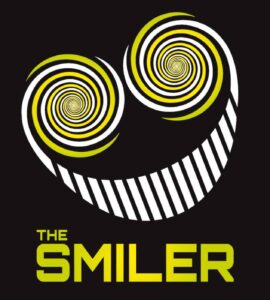 The Smiler has changed the coaster industry for the better, because it exemplified the possibility of building an extremely thrilling coaster in a very small space. It completely crushed the record for most inversions on a roller coaster, raising the bar for what is possible for theme parks. The attraction also is an example of how important theming is to a ride experience; The Smiler would not feel the same if it lacked a theme as twisted as its track layout. Overall, this coaster is one of the best examples of a collaboration of both a coaster manufacturer and a park to make a thrilling, compact, well-themed ride.
The Smiler has changed the coaster industry for the better, because it exemplified the possibility of building an extremely thrilling coaster in a very small space. It completely crushed the record for most inversions on a roller coaster, raising the bar for what is possible for theme parks. The attraction also is an example of how important theming is to a ride experience; The Smiler would not feel the same if it lacked a theme as twisted as its track layout. Overall, this coaster is one of the best examples of a collaboration of both a coaster manufacturer and a park to make a thrilling, compact, well-themed ride.
Have you ridden Smiler at Alton Towers? Share your thoughts about the coaster in the comments section below.
About the Author:
 Ryan Cataldo is currently a high school freshman with over eight years of experience building roller coaster models and studying their efficacy. His favorite subjects in school are math, science and band. He is highly interested in the mechanical and complex workings of roller coasters, and his articles explore these topics in depth. To this end, he publishes videos of models of K’nex Roller Coasters on his YouTube channel called DryEyeBuilds, with about 40,000 collective views.
Ryan Cataldo is currently a high school freshman with over eight years of experience building roller coaster models and studying their efficacy. His favorite subjects in school are math, science and band. He is highly interested in the mechanical and complex workings of roller coasters, and his articles explore these topics in depth. To this end, he publishes videos of models of K’nex Roller Coasters on his YouTube channel called DryEyeBuilds, with about 40,000 collective views.

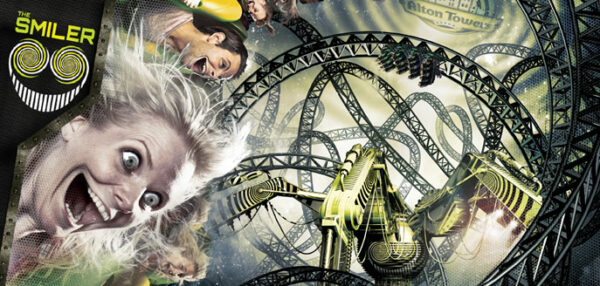

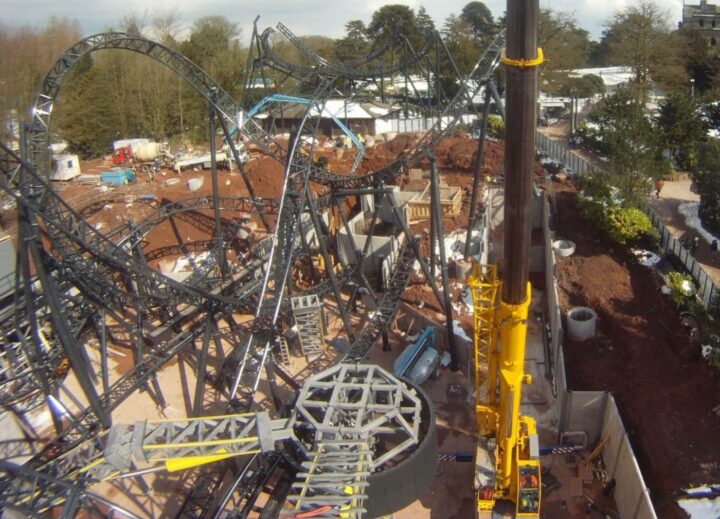
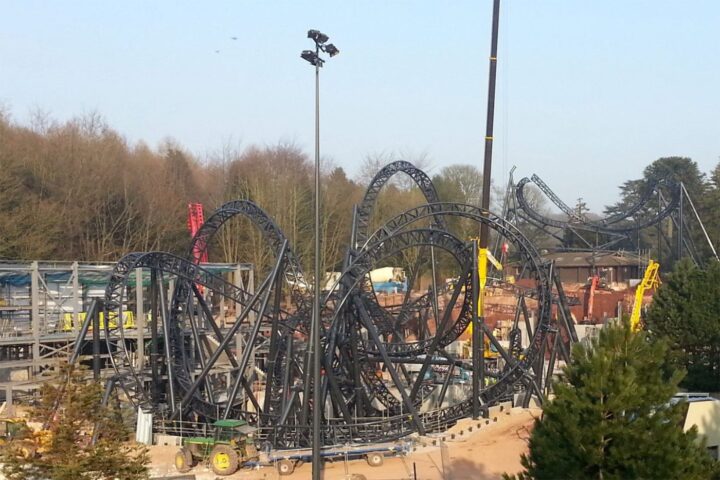
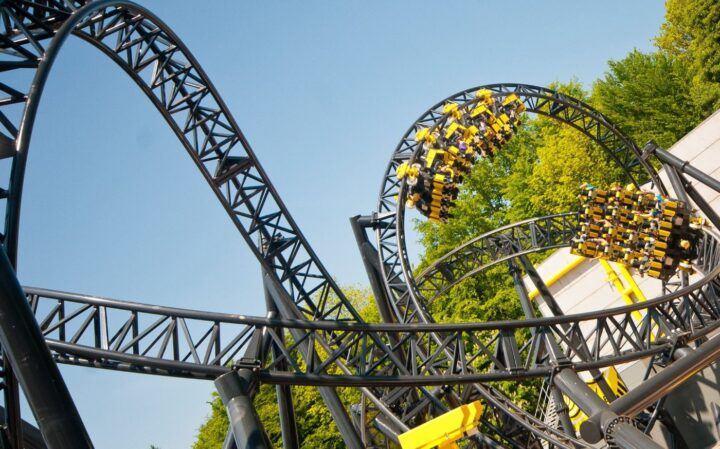
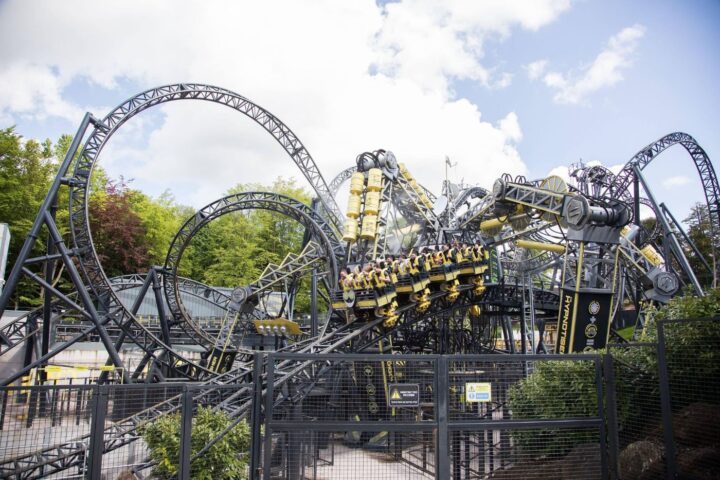
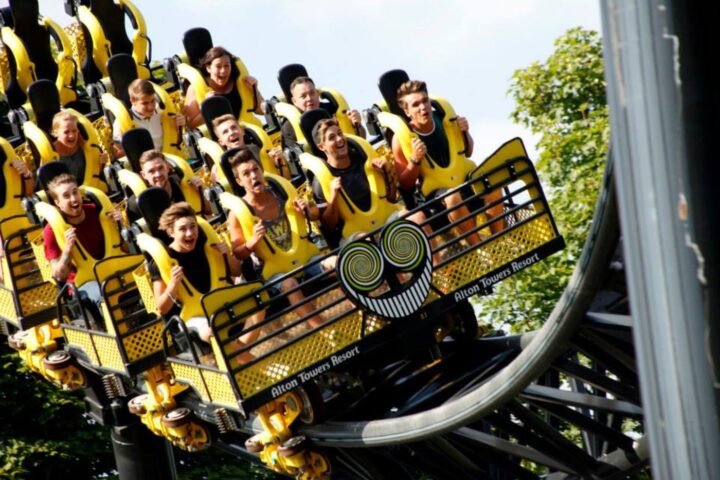
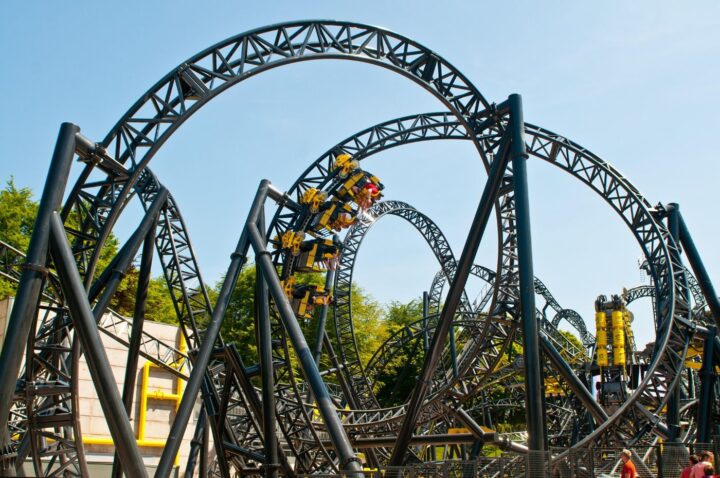
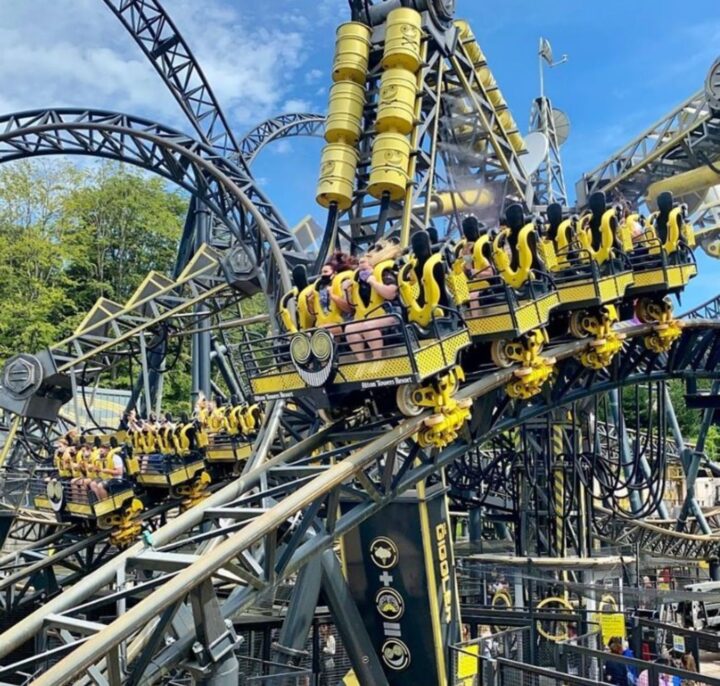
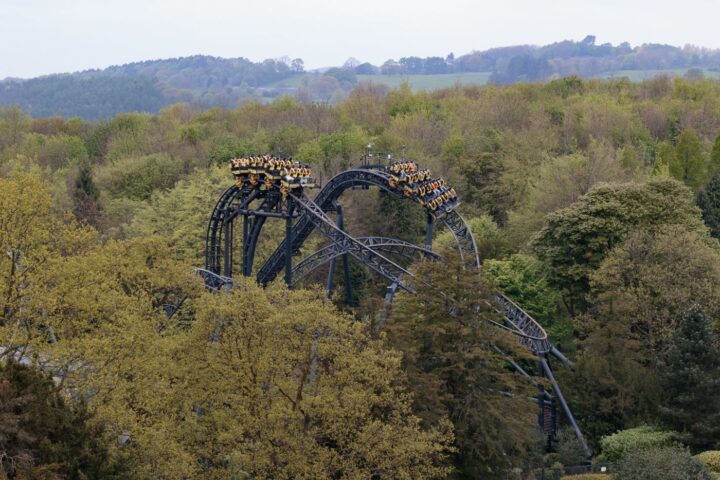
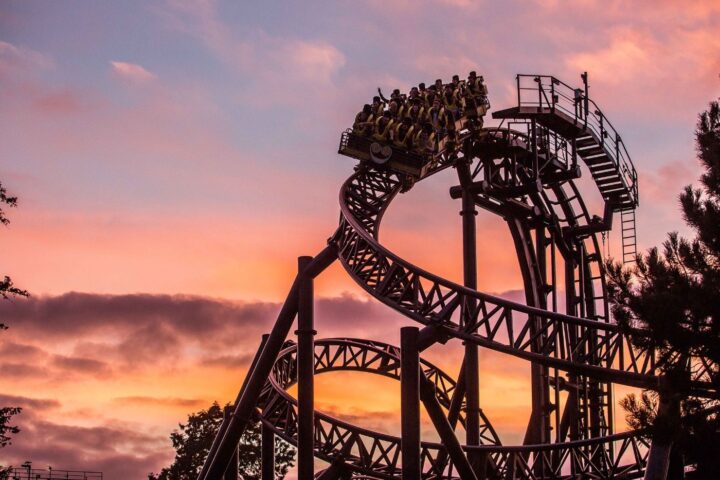
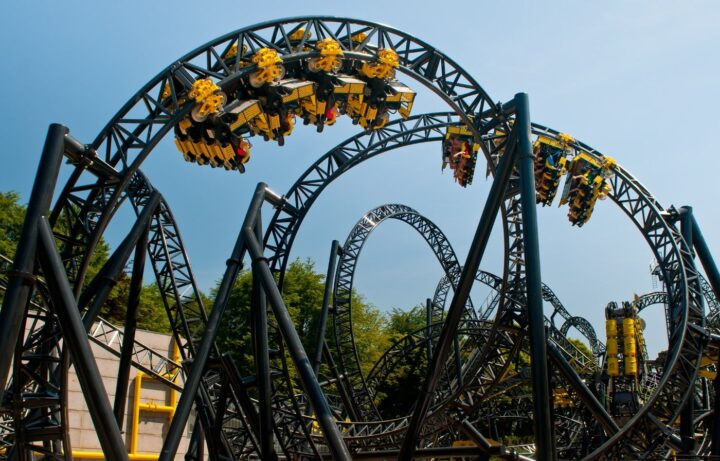
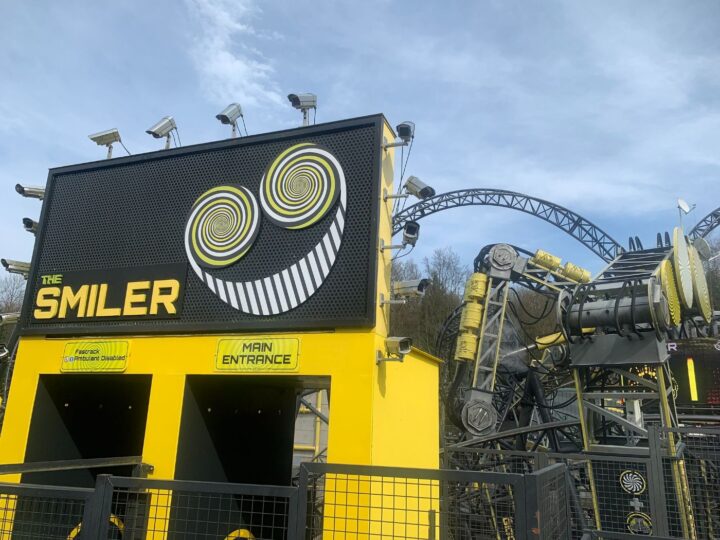
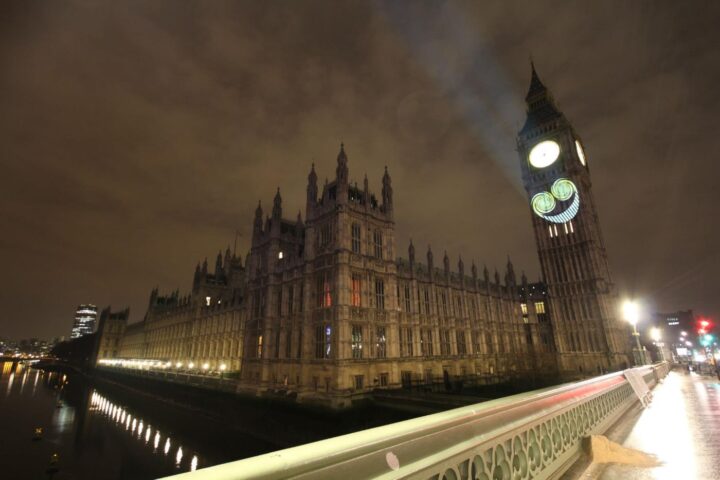
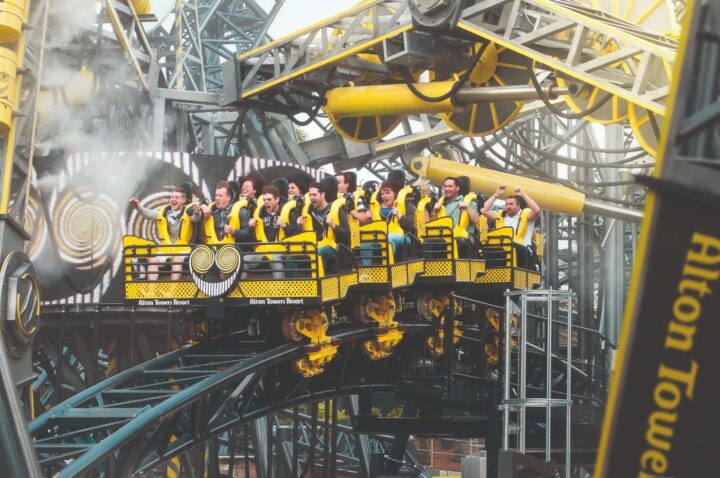
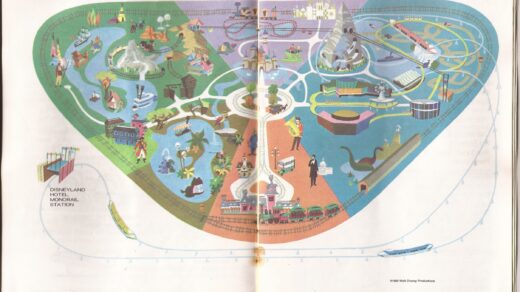
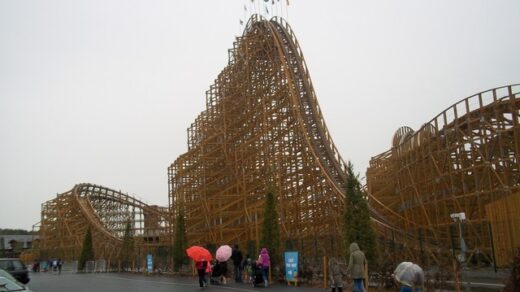
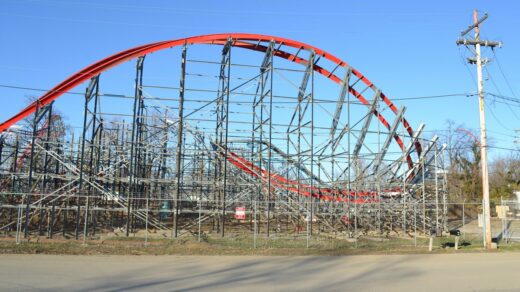











I went on the smiler recently and I admit I was nervous but I get that with all rides, but once I was in the ride and set off it was fun to the point I liked the photo as you can see I was having fun. I have been on the Pepsi max at Blackpool before it was upgraded to the big one and I felt the smiler was safer. I would go on that ride again as it was a really good experience especially when you get to the halfway point and the car slows down that is funny. My daughter enjoyed counting all 14 loops and she loved the ride and has been on the smiler with friends several times. Being the most popular ride you have to be prepared to wait in the queue for over an hour but if you have a quick access pass then you aren’t waiting long.